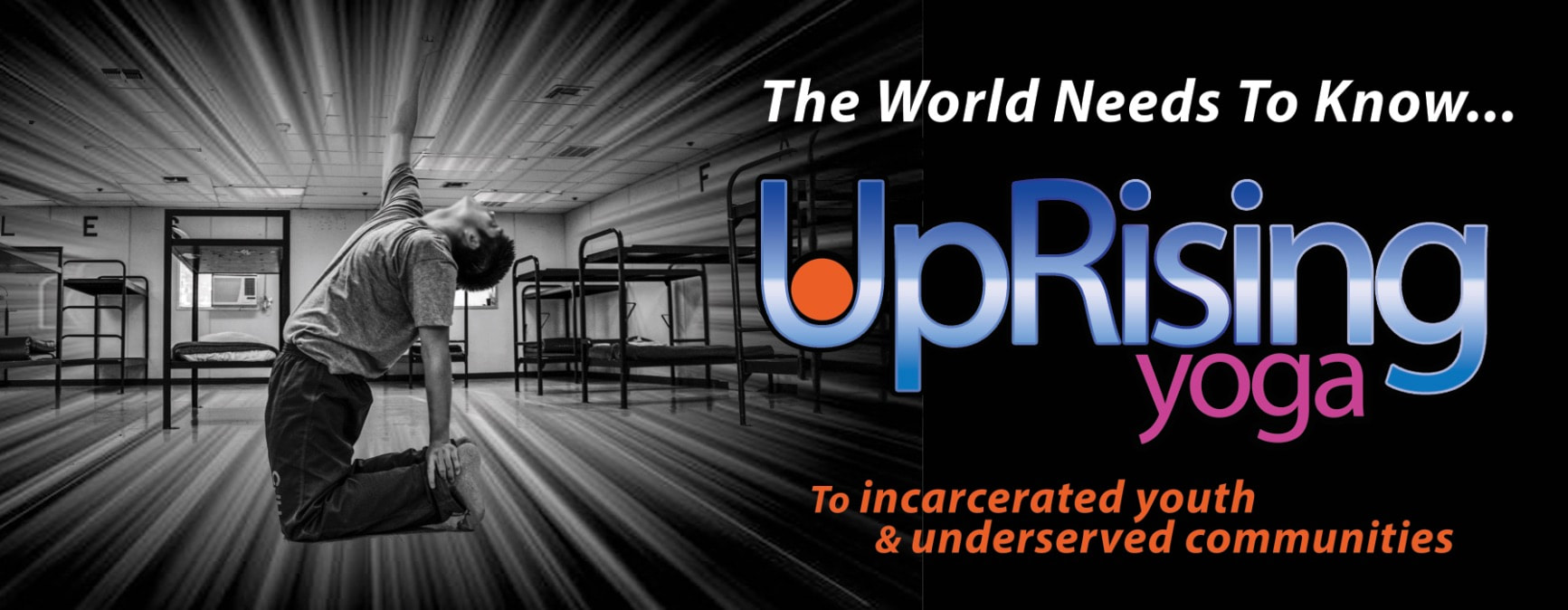|
Yoga’s Place in the Juvenile Justice SystemAUGUST 4, 2013 BY NANNETTE RICAFORTE LEAVE A COMMENT Why our at-risk youth and our juvenile detention centers could use some yoga.It was Christmas Eve night in 1997 and I was processed into my jail cell wondering how I ended up there. I replayed the moments leading up to it and wondered if I could have handled my anger differently. The charges against me were assault and battery toward a family member. The trauma my three-day stint in jail inflicted was enough to convince me to change my ways and manage my temper. There were a handful of inmates who expressed their bewilderment at my presence. “You don’t belong here little girl.” (I was 29-years-old.) My three children were too young to understand where their mommy was during the holidays but I was honest with them once they were old enough to understand. I hoped my honesty would not only allow them to learn from my mistakes but employ a scare tactic to avoid jail in their future. Last month I had the privilege to photograph Uprising Yoga’s first workshop. This event wasn’t your regular yoga session but one where trained yogis came together to discuss their passion for teaching yoga in the juvenile justice system. Before I met Jill Weiss, founder of Uprising Yoga, I never correlated yoga with jail/juvenile hall. My mind was reeling with the information I learned about at-risk youth at the yoga workshop. Approximately “250,000 youth are tried, sentenced, and incarcerated as adults each year across the United States.” Some believe the severity of the offenses justify imprisonment in an adult jail regardless of age but Campaign For Youth Justice believe keeping kids in adult jails & prisons isn’t safe, fair, or right: Youth are 36 times more likely to commit suicide; youth of color are disproportionately impacted; and Federal law requires that children be protected while in custody. Separating youth from adults in adult jails/prisons only serves to put them in dangerous territory instead of protective custody. Placing youth in solitary confinement to separate them from adults can cause harmful effects such as “anxiety, paranoia, and exacerbate existing mental disorders” that can lead to suicide. Is juvenile hall a safer alternative for youth? One 17-year-old speaks candidly on how he was first detained in juvenile hall when he was 13-years-old and has returned seven times. He’s a broken kid who’s a product of a broken home. He comes from a “family of drug abusers and criminals.” “They expect me to change over night but they don’t realize progress takes time. I’ve changed in the last 4 months here by trying to control my anger…my mouth…my disrespect…They say I have grown a bit.” According to Tamar Birckhead’s article juvenile hall isn’t a place for kids. Youth who are considered dangerous to society, runaways, drug addicts, or mentally ill are taken into custody in detention facilities and often mistreated with mechanical restraints or locked in solitary confinement. Birckhead suggests using “community-based services, wraparound therapy for families, and outpatient treatment instead of removing adolescents from their homes and families.” For those kids without options juvenile hall could be a place of rehabilitation offering “psychological treatment, vocational training and quality education.” In 2012, James Swift highlighted a handful of experts and their belief that modern juvenile justice systems have taken a turn toward a positive rehabilitative route. While it is understood that juvenile detention centers protect the community from at-risk youth, it should also be a place that “serves a greater purpose for both youth and society.” Several factors contribute in making juvenile detention a positive rehabilitative experience with professionally trained and caring personnel who can teach juveniles to be better people. Mike Rollins, an executive director of Coosa Valley Youth Services (CVYS) in Alabama, believes giving incarcerated teens “as many tools as they get, holistically, [we] stand a lot better chance of success when they leave us.” At CVYS physical activity is added to a curriculum of counseling and academic services as part of their rehabilitation. Males shoot hoops while females participate in yoga programs and equine therapy. A study conducted by Oxford University revealed psychological benefits such as improvement in mood and decreased stress among prisoners who completed a ten-week yoga course. It’s not touted as a cure but a way to manage stressors in inmates. For Jill Weiss of Uprising Yoga (URY), her work with at-risk youth in L.A. county’s juvenile hall is “to share yoga to plant the seed of healing, not to help or fix them, but to offer a gift of sharing how yoga has helped us heal.” Every Tuesday night since 2011, URY has taught students how to apply yoga to their lives especially in controlling their anger and temper when faced with certain situations. Positive rehabilitative practices yield promising results for youth in juvenile hall. Let this be the new path for the juvenile justice system in the future. –Photo: LynTally/Flickr
0 Comments
Leave a Reply. |
Archives
June 2024
Categories |


 RSS Feed
RSS Feed